#Isabella of aragon
Explore tagged Tumblr posts
Text


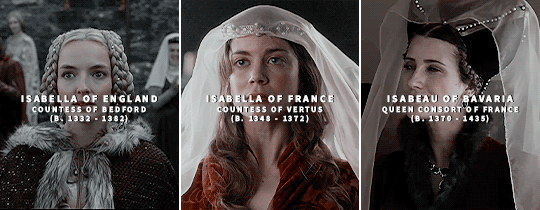
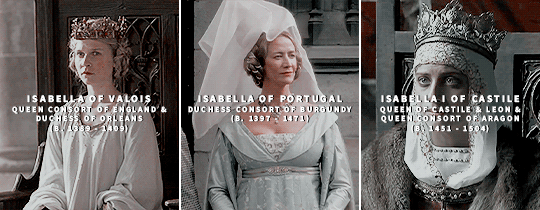


↳ Historical Ladies Name: Isabella/Isabelle
#isabella of gloucester#isabella of angouleme#isabella of england#isabella of aragon#isabella of france#isabella of valois#isabeau of bavaria#isabella of portugal#isabella i of castile#isabel neville#isabella d'este#isabella of austria#isabella of parma#historicalnames*#historyedit#my gifs#creations*
413 notes
·
View notes
Text
Don't mind me, I'm just thinking about how Joanna I of Castile named three daughters after her sisters and wanted to name her firstborn son after her brother.
#Joanna the mad#juana la loca#juana i of castile#Juana i de castilla#Isabel#Isabel la catolica#isabella i of castile#isabella of aragon#John of aragon#Isabel de aragon#catherine of aragon#Maria of aragon#Isabel de austria#Maria de Austria#Charles v#Catalina de austria#£#Isabella of austria#Marya of austria#Catherine of austria
30 notes
·
View notes
Text
This is closeup on one of Sittow's paintings

#historical portraits#catherine of aragon#isabella of castile#joanna of castile#maria of aragon#isabella of aragon#virgin mary#sittow
5 notes
·
View notes
Text

I think this is a beautiful portrait. It is of Isabella of Aragon, Queen of Portugal (1470-1498). She looks devout, pious, angelic, peaceful.
Isabella was the eldest child of Ferdinand II of Aragon and Isabella I of Castile, and sister to a number of siblings, one of whom was Catherine whose marriage to Arthur, Prince of Wales and then his younger brother Henry VIII formed an alliance between England and Spain. At this point in time, all Christians were Catholics and their headquarters were in Rome. Protestantism didn’t come about until 1517, and that began in Germany, coincidentally a year after the death of Ferdinand II. He and his wife had been zealous Catholics, responsible in 1478 for the creation of the Spanish Inquisition, whose purpose it was to stamp out Jews and Muslims and return the country to the Christian faith.
Isabella became Queen of Portugal when she married King Manuel I. Prior to this, she had been married to his nephew, Prince Afonso. Acc. to Wikipedia, though the marriage had been an arranged one, it had quickly become a love match and Isabella proved a popular figure with the Portuguese royal family due to her knowledge of their language and customs brought about by the years she spent in Portugal as a child. But only a year later, in 1491, Afonso was killed in a riding accident and Isabella was heartbroken. Later, - and this is the part I find interesting - she became convinced that he had died because God was angry that Portugal had provided a refuge for the Jews that her parents had expelled from Spain. (You have to remember that most people were extremely religious in those days and they truly believed in and feared God’s wrath).
Afonso’s death rendered Isabella a young widow and she did not wish to marry again, but as a member of the Spanish royal family it was expected of her. So, she agreed to marry Manuel, but only on the condition that he expel all Jews from Portugal who would not convert to Christianity. He agreed to her ultimatum and they married in September 1497. Tragically, she died a less than a year later, within an hour of giving birth to her son. She was 27.
3 notes
·
View notes
Note
I am trying to write a modern au fanfic about the Catholic monarchs and their children.... Can u please suggest some ideas? Especially about the personality types of the children. Isabella of Aragon is my favorite so I might want to put some emphasis on her. Thank you
Little is known about Isabella of Aragon, but she and her mother were supposedly alike in terms of personality and personal devotions. She was very obstinate in her decision to stay single after the death of her first husband, and it cost her parents a lot to convince her otherwise, and even then she demanded Manuel to expel the Jews before complying. It seems she was a loving daughter who had profound respect for her parents.
5 notes
·
View notes
Text
This book focuses on Isabella I of Castile, her mother, Isabella of Portugal, and her two oldest daughters Isabella of Aragon and Joanna of Castile.
#isabella i of castile#isabella of portugal queen of castile#isabella of aragon#joanna of castile#books#medieval history#women’s history#medieval women
0 notes
Text
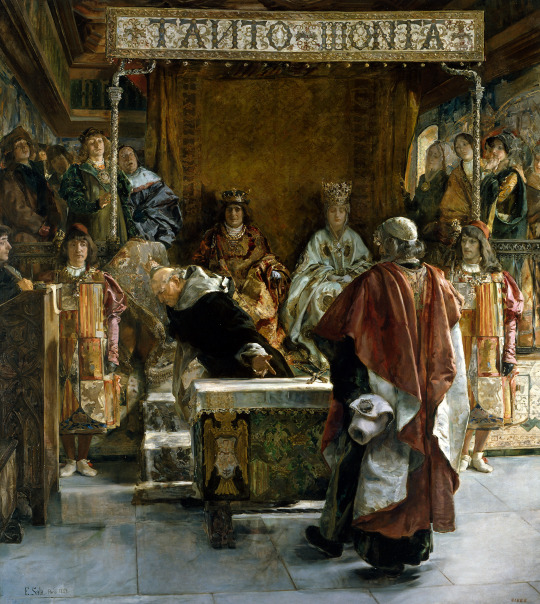
Emilio Sala y Francés (Spanish, 1850-1910) Expulsión de los judíos de España (año de 1492), 1889 Museo Nacional del Prado
#Emilio Sala y Francés#Emilio Sala#1800s#expulsion de los judios de espana#world history#expulsion of jewish people from spain#art#fine art#european art#classical art#europe#european#fine arts#oil painting#europa#mediterranean#Isabella I of Castile#king aragon#ferdinand ii of aragon#queen isabel#king#queen#spanish king#spanish queen#1400s
66 notes
·
View notes
Text

Columbus at the Court of Barcelona by Victor A. Searles
#victor a searles#art#christopher columbus#royal court#spain#barcelona#spanish#history#age of discovery#age of exploration#new world#ferdinand ii of aragon#isabella of castille#queen#royalty#europe#european#native american#american indian#indian#americas#america#native americans#american indians
17 notes
·
View notes
Text
No more Tudors, please—unless it’s Mary I or Edward VI. Let’s focus on the Trastámaras, especially Catherine of Aragon, and delve into the Habsburgs, like Margaret of Austria and her nieces: Eleanor, Isabella, Maria, and Catalina. And don’t forget Charles V and his brother Ferdinand! We need more content on the Trastámara and Habsburg dynasties, as well as Stuart topics that aren’t about Mary, Queen of Scots or Stuart England.
#history#tudor era#mary i of england#mary i#catherine of aragon#catalina de aragon#margaret of austria#eleanor of austria#isabella of austria#maria of austria#charles v#ferdinand i#mary queen of scots#mary stuart#stuart dynasty#trastamara dynasty#enoug with the elizabeth i stuff#gimme mary i
19 notes
·
View notes
Photo

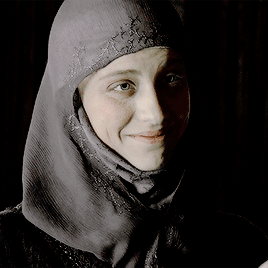
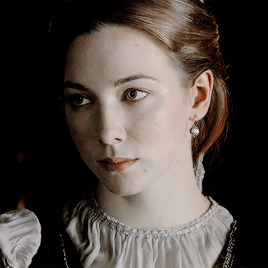

3 December 1497: Elizabeth of York, Queen of England, writes a letter to Isabella, Queen of Castile, asking after her future daughter-in-law’s health.
‘Hence it is that, amongst our other cares and cogitations, first and foremost we wish and desire from our heart that we may often and speedily hear of the health and safety of your serenity, and of the health and safety of the aforesaid most illustrious Lady Catherine our common daughter. And if there by anything in our power which would be grateful or pleasant to your majesty, use us and ours as freely as you would have all in common with you. We should have written you the news of our state, and written at length of these things to your majesties. For the rest may your majesty fare most happily according to your wishes.
From our palace of Westminster, 3rd day of December, 1497’.
Complete transcript of Elizabeth’s letter (x).
#historyedit#history#elizabeth of york#catherine of aragon#isabella of castile#the tudors#henry vii#henry viii#perioddramaedit#tudoredit#tudorsedit#the six wives#**
250 notes
·
View notes
Text
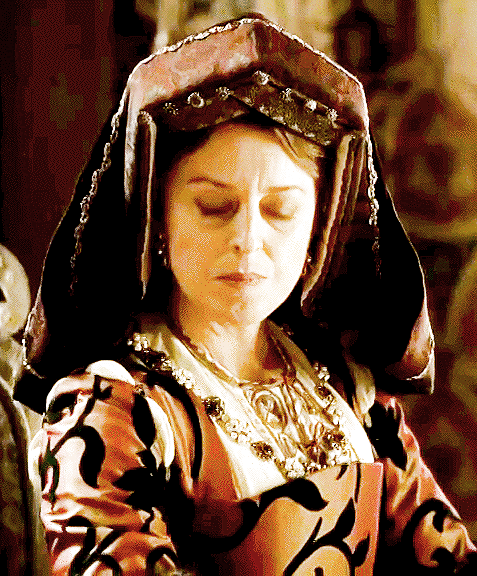
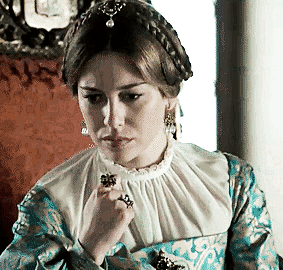
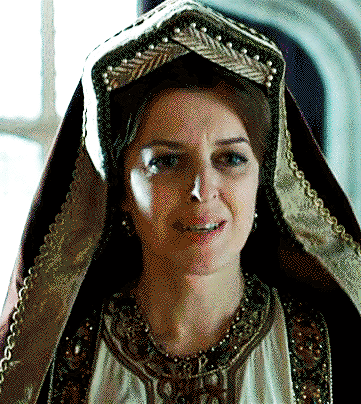
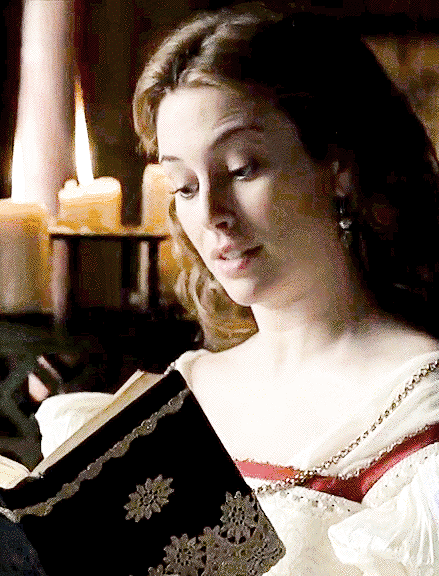
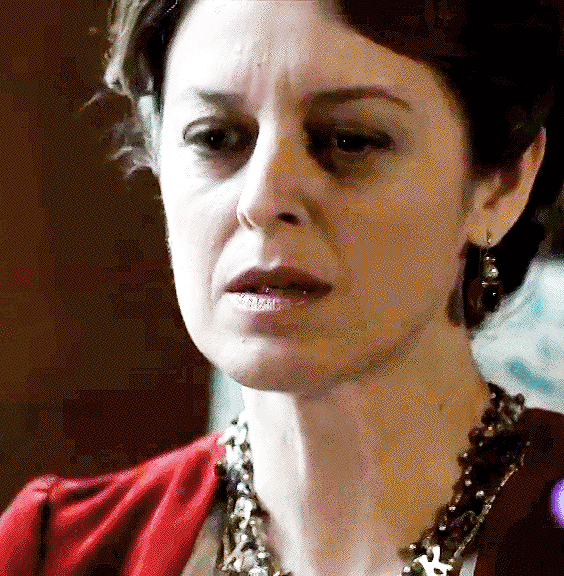

Katherine of Aragon & Isabel of Portugal
Holy Roman Empress Isabel of Portugal was interested in the case of the repudiation of her aunt the Queen of England, and she was an advocate of her cause. Katherine of Aragon knew that her nephew, Carlos V, was her only chance to defend her case successfully and that is why she wrote him. Since the death of King Fernando II of Aragon in 1516, her nephew had been her paterfamilias, the head of the Spanish Monarchy, and the most powerful monarch in Europe. Katherine played an active role as ambassadress in the Tudor court, and she was one of his biggest European supporters. Seven months after Katherine’s plead, Carlos sent a letter to his wife Isabel in Spain who was acting as his Governor during his absence. He entrusted her with a mission, to find evidence and witnesses that could help their aunt in her cause to defend her marriage.
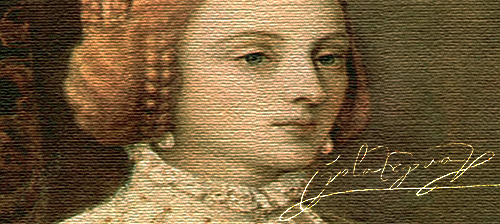
The Empress rejoiced that her husband Carlos V was so determined to defend the right of Queen Katherine, which, indeed, it were his duty to do; not only because she was his aunt but also because the case closely concerns the Christian religion itself. Isabel sent several orders to different parts of the Iberian Peninsula to gather evidence. The first was directed to the officers in the Chancillería in Aragon to look for any legal documents related to the marriage negotiations. Another order was sent to elaborate a list of people who were still alive and who had been witnesses in the negotiations concerning Katherine’s marriages. A second group of people were those who had accompanied Katherine to England in 1501. The third order included a questionnaire for these people that directly addressed Katherine’s virginity.
Katherine herself had written to her a full account of the case, of which copies were made to be sent to the Universities of Castile, Aragon, Valencia and Catalonia, with the orders of the Empress that the Universities are to study the case very carefully and send their opinions to her. Originals of the same shall be sent to the Emperor, and copies to Micer Mai in Rome.
In May 1531 a letter was rediscovered in Spain, written by Katherine’s father Fernando to his ambassador in Rome, Francisco de Rojas, which appeared to change everything. Katherine must have been excited to hear that it confirmed that Arthur had not consummated the marriage but that Rojas was to apply for a dispensation anyway in order to satisfy the English.

Empress Isabel was in contact with her ambassadors in Rome, France and London. Dr Pedro Ortiz, an expert in law and Lecturer at the University of Salamanca designated to defend Katherine’s case in the papal court, wrote to the Empress urging her to collect Katherine's letters as the future relics of a holy martyr. In another letter, Ortiz implored the Empress to pray for Katherine and Mary. He believed that they are in great danger.
The death of Katherine of Aragon on 7 January 1536 at Kimbolton Castle, was really sad for the Spanish Royal family. Carlos V was in Naples. By February 1, the Emperor wrote to his wife, who was acting as his regent in Spain, saying that he had heard of Katherine’s death “five or six days” previously. He told her that he and his court had donned mourning and that suitable obsequies had been performed.
Five or six days ago the news of the demise of her most Serene Highness the queen of England arrived, which I felt deeply, as you may imagine. May God receive her in Paradise, which she certainty deserved on account of her extreme goodness and virtue, and the excellent life she led. About her last illness and death the accounts differ. Some say that it was produced by a painful affection of the stomach, which lasted upwards of 10 or 12 days; others that the distemper broke out all of a sudden after taking some draft, and there is a suspicion that there was in it that which in similar cases is administered. I do not choose to make such an affirmation, nor do I wish to have it repeated as coming from me, but nothing can prevent people from judging and commenting upon the event according to their own feelings. Of the Princess, my cousin, I hear only that she is inconsolable at the loss she has sustained, especially when she thinks of her father’s past behaviour towards herself, and of the little favor she can expect for the future. I trust, however, that God will have pity on her, and will not permit the great injustice which has been shewn her to remain with- out some reparation. I have put on mourning, and ordered all the grandees around me, the high officers of this household, as well as the gentlemen of my chamber and table, to do the same, and I myself intend wearing it until I go to Rome. The exequies have been performed here as is customary in such cases; there, where you are, the same ought to be done, as this is but fitting.
Isabel felt Katherine’s death and she was surprised “by what is said of her death”, the rumors about a possible poisoning of her aunt. The Empress also received a letter from Dr Ortiz, enclosing a copy of one from ‘that glorious martyr’ Katherine herself ‘by which the Empress will see the perfection and heroic virtues to which she attained’. Katherine would be a ‘true patroness and advocate of the Empress in Heaven’.
Sources:
Amy Licence, Catherine of Aragon: An Intimate Life of Henry VIII's True Wife
Emma Luisa Cahill Marrón, Article: “Royal Sexualized Bodies at the Tudor Court” : Questioning an Honest Queen: The Scrutiny Around Queen Catherine of Aragon's Virginity
Julia Fox, Sister Queens: The Noble and Tragic Lives of Katherine of Aragon and Juana, Queen of Castile
#catherine of aragon#katherine of aragon#catalina de aragon#isabella of portugal#isabel de portugal#english history#spanish history#women in history
28 notes
·
View notes
Text
youtube
𝘐𝘴𝘢𝘣𝘦𝘭𝘭𝘢 𝘰𝘧 𝘊𝘢𝘴𝘵𝘪𝘭𝘦, 𝘍𝘦𝘳𝘥𝘪𝘯𝘢𝘯𝘥 𝘰𝘧 𝘈𝘳𝘢𝘨𝘰𝘯, 𝘵𝘩𝘦𝘪𝘳 𝘤𝘩𝘪𝘭𝘥𝘳𝘦𝘯 + 𝘵𝘩𝘦𝘪𝘳 𝘭𝘰𝘷𝘦𝘴
#isabella of castile#ferdinand ii of aragon#Isabel#Isabella of aragon#joanna the mad#joanna of castile#philip the handsome#catherine of aragon#henry viii#John of aragon#Maria of aragon#Manuel i of portugal#Michelle Jenner#Catalina de Aragon#Youtube
3 notes
·
View notes
Text
SIX THE MUSICAL - MODERN!AU: illustration






Lina's family tree 1/2
#Fernando de Aragón y Trastámara Junior#Aldonza Ruiz de Ivorra#Alonso de Aragón y Ivorra#Juana Nicolás#Juana María de Aragón y Nicolás#Toda de Larrea#María Esperanza de Aragón Larrea#Juana Pereira#María Blanca de Aragón Pereira#Isabella de Castilla#Isabella de Castilla Aragón y Trastámara#Juan de Castilla Aragón y Trastámara#Juana de Castilla Aragón y Trastámara#María de Castilla Aragón y Trastámara#Marcela de Castilla Aragón y Trastámara#Catalina de Castilla Aragón y Trastámara#Germana de Foix#Juan Manuel de Aragón y Foix#six#six the musical#catherine of aragon#modern!au#six modern!au#six the musical modern!au#six the musical illustration#six illustration#illustration#family tree
18 notes
·
View notes
Text
Random saints by Sittow or Catherine of Aragon's parents?

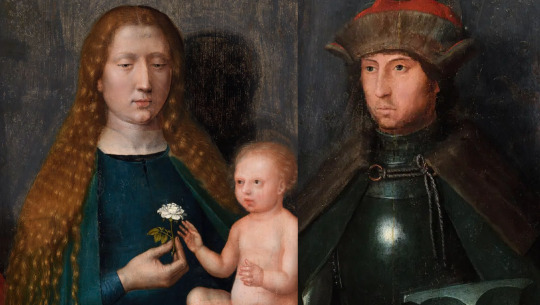
Read further if you wish to know what my theory is.
I first found this photo with mention it is by Sittow and at first I thought it is another portrait of Catherine. But quickly I realised this woman looks older and the features are not exactly the same.
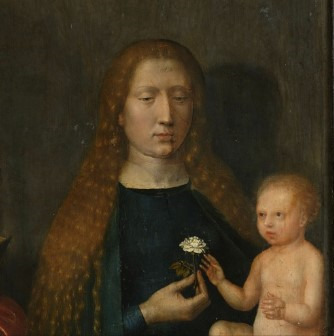
The nose is much narrower. And I started to wonder...we know that Sittow painted at least one portrait of Queen Isabella I of Castile.
And she had such nose. I could exclude possibility some of Catherine's sisters looked like this too, but women in that family tended to be very young-looking for really long.
So the age of sitter already is suggesting that it could be based upon Isabella towards end of her life. And it is also odd for depiction of Virgin Mary to depict woman who is not young...it is point in Isabella's favour.
While many claim Sittow painted Isabella in 1485, he was only born in 1468/1469 and didn't even become indipended master until at least 1488. He is first recorded working in Toledo in 1492. So he'd always be only able to depict Isabella over age of 40. And tbh, if this is her..then she looks great for somebody over 40!
But where is this image? It took me while to track down.
It's detail from wings of theThe Passion Altarpiece (Tallinn), its middle part is from c.1515-1520(with some 17th century additions) by different artist.

But I am not so sure how accurate is the dating of the outer wings by Sittow(1518-1525) which are in very different style, and might have originally belong to different altar middle.

If it is indeed 1518-1525 dating, then imo they are posthumous depictions based upon earlier sketches done from life. Sittow reusing those old sketches, using them as inspiration for his later work.
Link to photos only. Left pannel: https://artsandculture.google.com/asset/the-passion-altarpiece-outer-wing-with-the-virgin-mary-and-apostle-james-the-greater-paintings-of-the-outer-side-of-the-wings-by-michel-sittow-and-his-workshop/BwFnRG1v6gRqmQ
Right pannel: https://arthive.com/artists/75951~Michel_Sittow/works/526786~Saint_Adrian_and_Saint_Anthony
As to where they are located?
-Niguliste Museum(housed in former St. Nicholas' Church), which is part of Art Museum of Estonia(which combines collections from 3 other buildings+ this church). Hence in Tallin, Estonia but be aware there is over 3 km distance in between the church and other buildings.
But if anybody could go there and get us some pictures it'd be great (if it is allowed). Currently Niguliste Museum has exhibition about Sittow:

But back to the pannels. The left one depicts Madonna(Virgin Mary holding baby Jesus) and St. James the Great(apostle and patron saint of Spain:
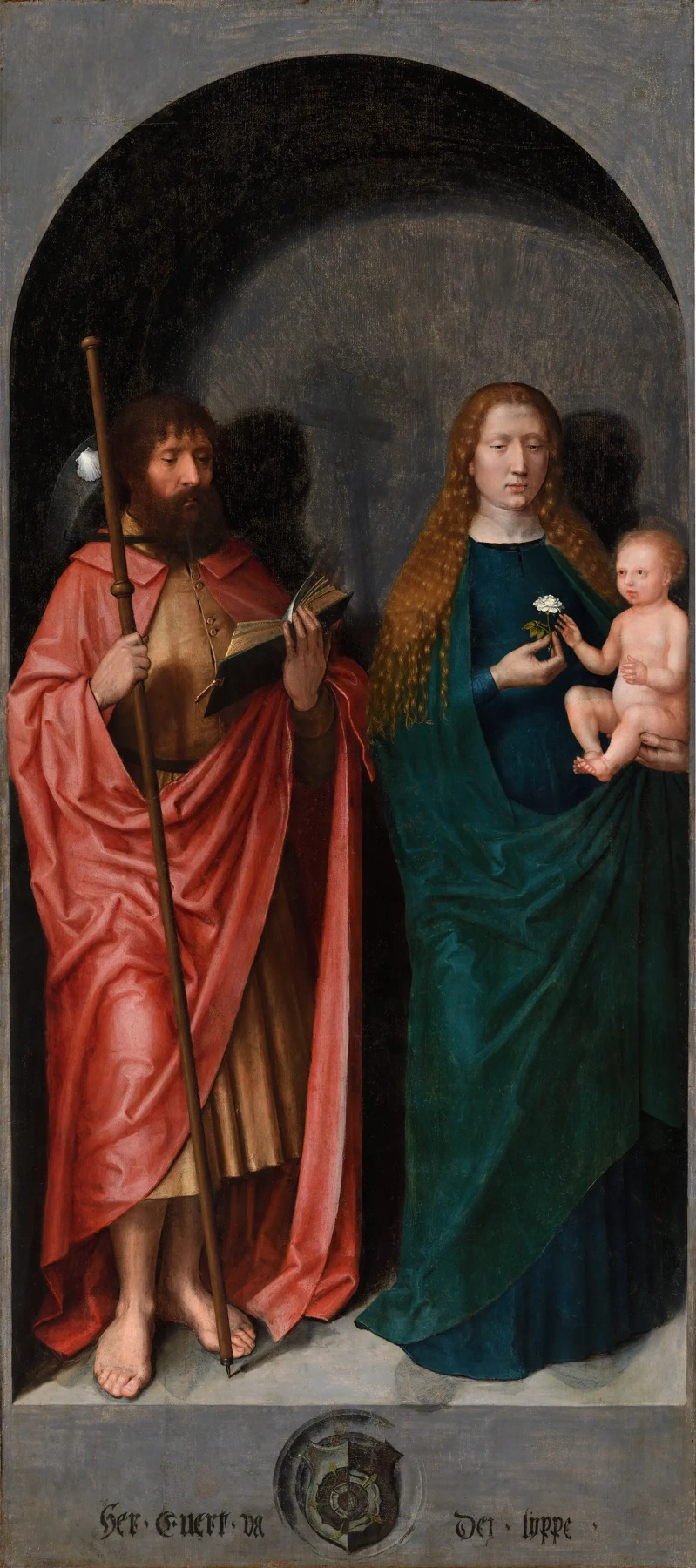
And please note that Tudor rose is combination of red and white rose and not always it was depicted as inner rose white, outer red. Sometimes they were halfed, with inner rose sometiems also switched.

Of course it could be some foreign coat of arms or later alteration.
Right pannel:

Here the coat of arms looks much newer and is probably altered(and if pomegranate turned out to be beneath it, I'd just die...)
The right pannel is depicting two male saints. On right is St Anthony the Great...was father of monasticism(of monastic life)...thus very important saint in christianity...
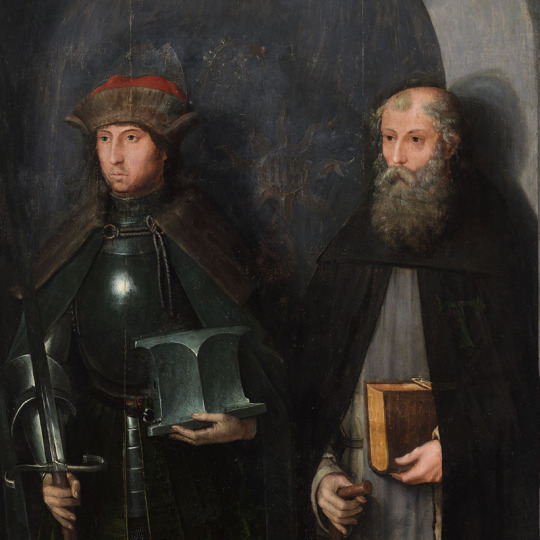
and on left St. Adrian of Nicomedia(2nd most popular military saint after St. George), and imo that's probably King Ferdinand II of Aragon:

It's not great likeness(brows not arched enough, looks bit slimmer, alla of nose not as defined), but overall it's enough of resemblence to not be able to exclude the possibility.
But if this is indeed done years after Sittow was in Spain...and he is reusing his old sketches of catholic monarchs to create this new religious scene(perhaps initially intended for them too, but never made into finished work before), then it is also possible that sketch done in pencil has partially rubbed off...and thus the differences in face of this male.
I think that if this was done while in Spain, such big differences are not very likely to occur. Not that pencil could not rub off, but I think Sittow would have noticed and cared about getting absolutely righ(to please his patrons) and thus would have corrected it.
Ehm, this kitty is supposed to be a lion:
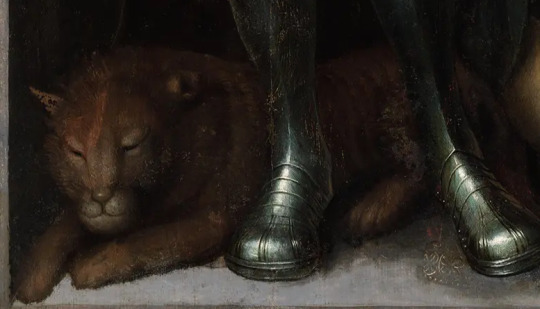
But you must be wondering, if Isabella indeed had this most vivid golden hair colour I always go on and on about, why does she have red hair here?
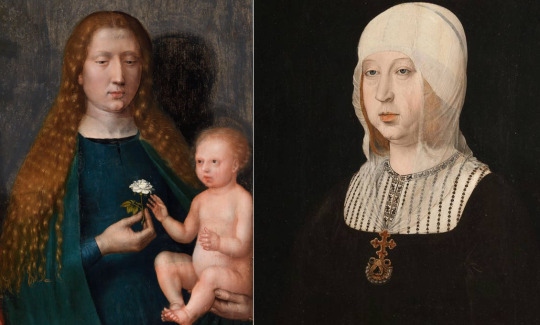
Several options to pick from: Pigments going wrong, Isabella's hair possibly turning to more reddish hues towards end of her life, or simply discoloured pinkish varnish which was very oddly applied...and on baby's skin you can see where somebody applied only one layer and where they went with brush for 2nd time.
If entire pannel has this varnish on, then it'd affect the hair, turning it more red. Why would such varnish not be removed? Sometimes money is tight and museums have multiple paintings to care for and those paintings in fairly good condition have to wait longer.
And sometimes it is not possible to remove discoloured varnish without harming the painting beneath.
Also worth of nothing is that Virgin Mary's dress is typically not teal, but vividly blue, the very best most expensive most vivid blue pigments were very often reserved for depicting the Virgin Mary:

Sometimes due to budget cost cheaper substitues were used, and those tend to fade.
Hence imo the colours originally might have been intended to be more like this(yes, I photoshopped it):

(I didn't change damn thing about male figure, just brightened it. But tbh I played with the woman's dress, skin and hair for while.)
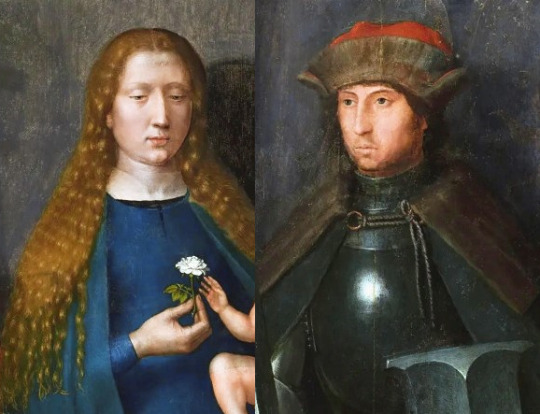
I mean if it looked like this now, fans of catholic monarchs would probably be all over it already.
But people overlook these dark slightly pinkish images located all the way in Estonia, even though it is atributed to Sittow himself!
(I don't mean people in Estonia, I mean people who search for Isabella's lost portrait by Sittow and stubbornly stuck to their favourite which is not even by Sittow!)

I honestly thought that people searching for lost portrait of Isabella by Sittow would have by now checked all his work, to see if perhaps she is there somewhere! Just doesn't look teen or young adult.
So I want you to be aware, if you're on quest of finding Isabella by Sittow's in that portrait with emerald necklace that this is imo the face you're looking for :
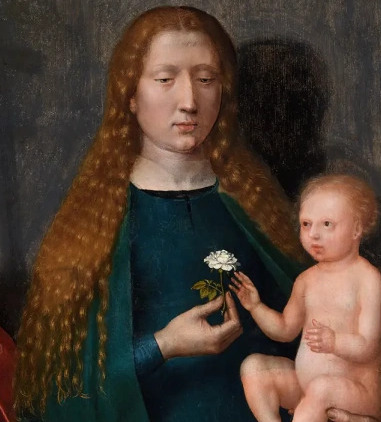
Possibly with hair bit more golden and skin more fair:
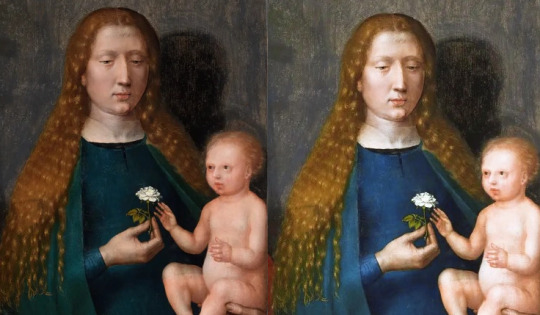
And it doesn't matter she doesn't look 20! She is still very beautiful.
Hence imo, these are Catherine of Aragon's parents, depicted in disguise of saints:

But I think they were likely painted years after Sittow left Spain, and his old sketches of them have been reused to create these pannels. I hope the experts will one day look more into this possibility.
I hope you've enjoyed this, and tell me what you think. Am I onto something or am I chasing shadows?

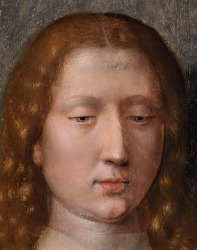
#historical portraits#isabella of castile#ferdinand of aragon#Isabella I of Castile#Ferdinand II of Aragon#sittow
76 notes
·
View notes
Text
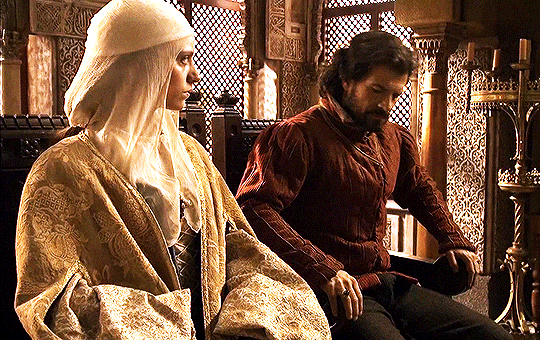




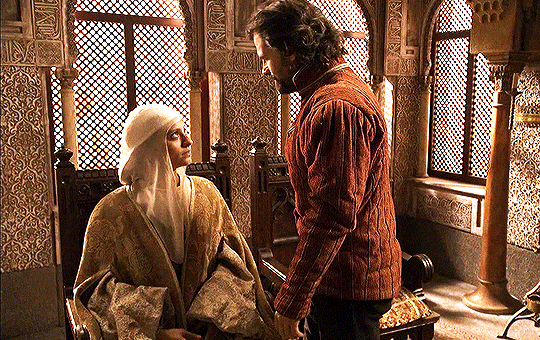
ISABEL TVE 2x06
#perioddramaedit#perioddramasource#weloveperioddrama#isabel tve#2x06#isabella i of castile#ferdinand ii of aragon#michelle jenner#rodolfo sancho
91 notes
·
View notes

